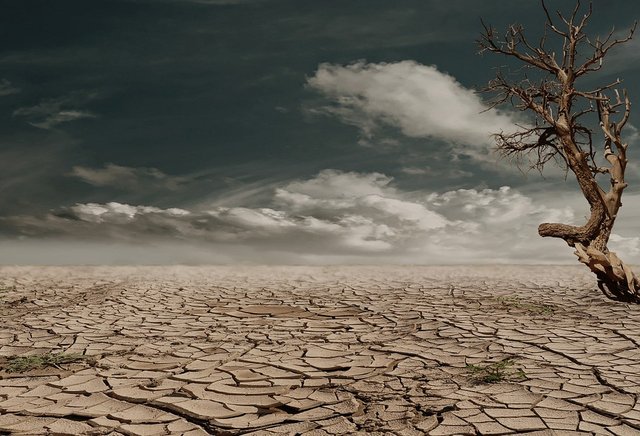A large percentage of the lands of our planet are at risk of suffering desertification, being this process one of the main environmental problems that the Earth suffers, although perhaps global warming grabs more headlines, but desertification is just as important since it affects soil productivity, which has serious socioeconomic consequences.

Desertification threatens with soil destruction. Source: Pixabay.com.
Desertification is the process of degradation of fertile land, turning it into arid and dry lands, being one of its causes the loss of vegetation cover. This process is due to several factors, its main causes being climate change and human action, the latter due to unsustainable activities such as deforestation, overgrazing and unecological practices, which finally lead to the loss of vegetation cover and consequent soil erosion.
The incidence of man in the acceleration of the soil erosion process is key to differentiate this concept from desertification, which is a natural evolutionary process and with which it is often confused.
The problem is serious, it is estimated that one third of the planet's land is at risk of suffering desertification, according to a report by the IPCC (Intergovernmental Panel on Climate Change), approximately 46% of the Earth's surface is covered by dry lands and 3 billion people live in them.

A large part of the earth's surface is at risk of desertification. Source: Pixabay.com.
Can desertification be reversed?
In simple terms, yes, if we understand that by acting on the factors that cause it, the process can be stopped, and if we act in time, since, although the soil has a great potential to recover its original state, at a certain point, when the soil is already too arid, the condition is irreversible.
However, the process is very complex and there is no single solution to attack the problem and generally the rehabilitation of desertified areas is costly and sometimes the results are limited.
Therefore, efforts should focus on preventing and mitigating desertification instead of reversing the process, and to avoid reaching an irreversible limit, solutions adapted to local conditions and the nature of the intervened area should be identified, in addition to a constant follow-up of the rehabilitation of the affected soil.

We must strive for sustainable land use. Source: Pexels.com.
It is also a task for everyone, especially for those involved, the agricultural and industrial collective that can cause soil desertification due to their activities, must have a greater commitment and responsibility with the soil they use, and implement sustainable practices that minimize soil erosion and overexploitation of aquifers.
With respect to the actions that can be implemented in the affected areas, some strategies can be pointed out:
- Implement restoration works that slow soil erosion, such as linear dikes, gullies or windbreaks on farmland.
- Preserve the natural vegetation and biodiversity of the area.
- Rational use of aquifers.
- Progressive reforestation of affected areas.
Let us bear in mind that desertification implies an irreversible decrease in the productive capacity of the soil and the loss of terrestrial ecosystems, which has serious socioeconomic consequences, putting at risk the livelihood of many regions.
Well friends, that is why we must join efforts to prevent and mitigate soil degradation, instead of trying to correct desertification. See you next time!
